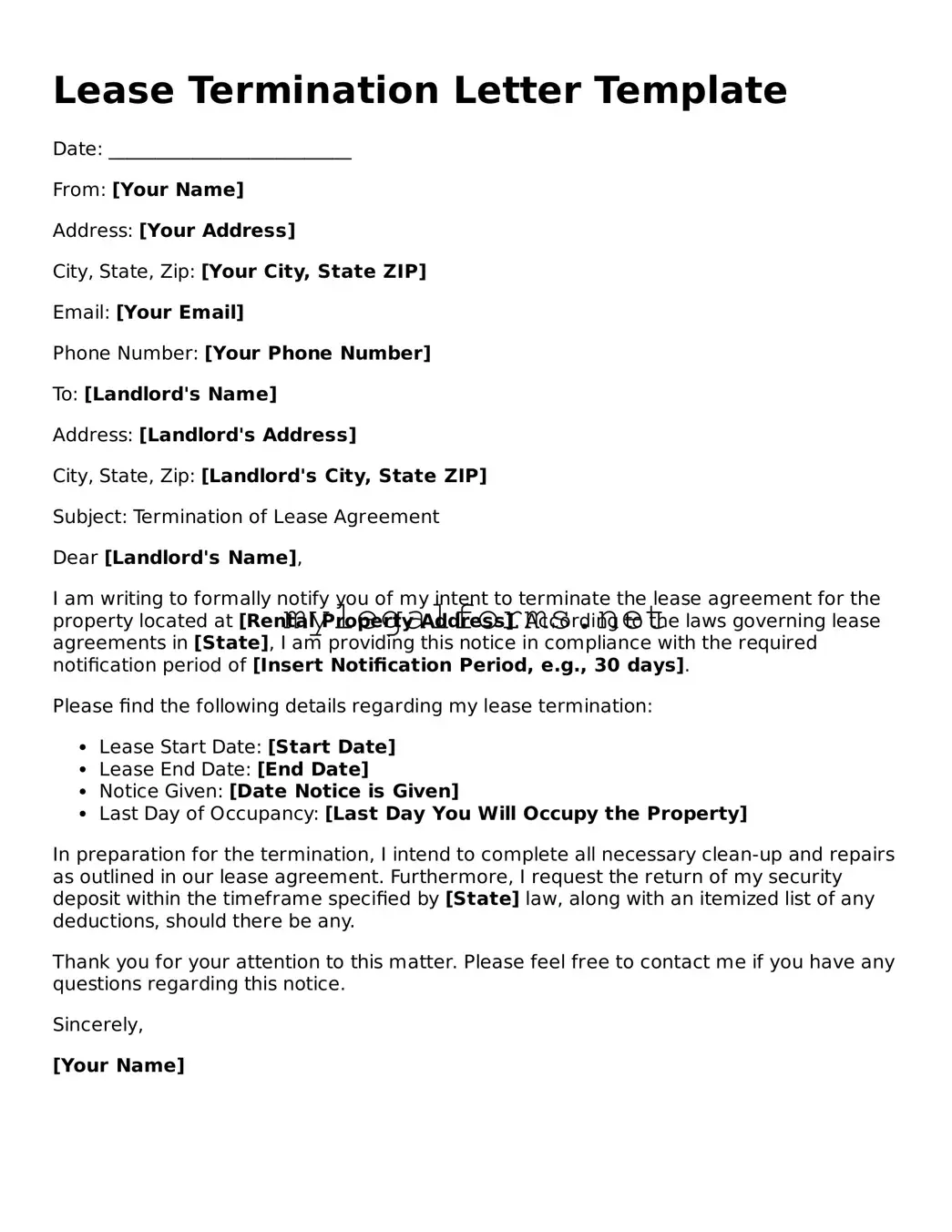Lease Termination Letter Template
Date: __________________________
From: [Your Name]
Address: [Your Address]
City, State, Zip: [Your City, State ZIP]
Email: [Your Email]
Phone Number: [Your Phone Number]
To: [Landlord's Name]
Address: [Landlord's Address]
City, State, Zip: [Landlord's City, State ZIP]
Subject: Termination of Lease Agreement
Dear [Landlord's Name],
I am writing to formally notify you of my intent to terminate the lease agreement for the property located at [Rental Property Address]. According to the laws governing lease agreements in [State], I am providing this notice in compliance with the required notification period of [Insert Notification Period, e.g., 30 days].
Please find the following details regarding my lease termination:
- Lease Start Date: [Start Date]
- Lease End Date: [End Date]
- Notice Given: [Date Notice is Given]
- Last Day of Occupancy: [Last Day You Will Occupy the Property]
In preparation for the termination, I intend to complete all necessary clean-up and repairs as outlined in our lease agreement. Furthermore, I request the return of my security deposit within the timeframe specified by [State] law, along with an itemized list of any deductions, should there be any.
Thank you for your attention to this matter. Please feel free to contact me if you have any questions regarding this notice.
Sincerely,
[Your Name]
